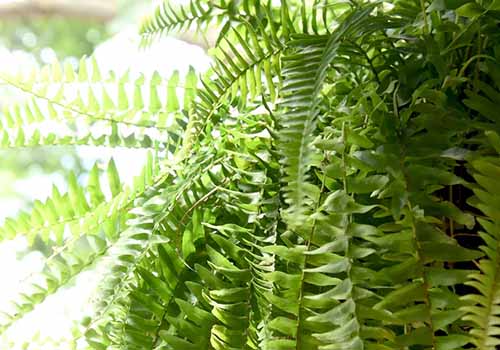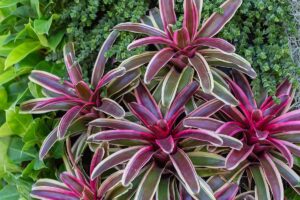When grown indoors, the Boston fern is a sight to behold. Lush fronds, a graceful form, delightful color – as a houseplant, Nephrolepis exaltata has it all.
Outdoor specimens can be just as stunning, but only when they’re cared for properly.
If you provide the right growing conditions, sword ferns are a low-maintenance addition to your garden, thriving in shady spots that might otherwise be devoid of greenery.
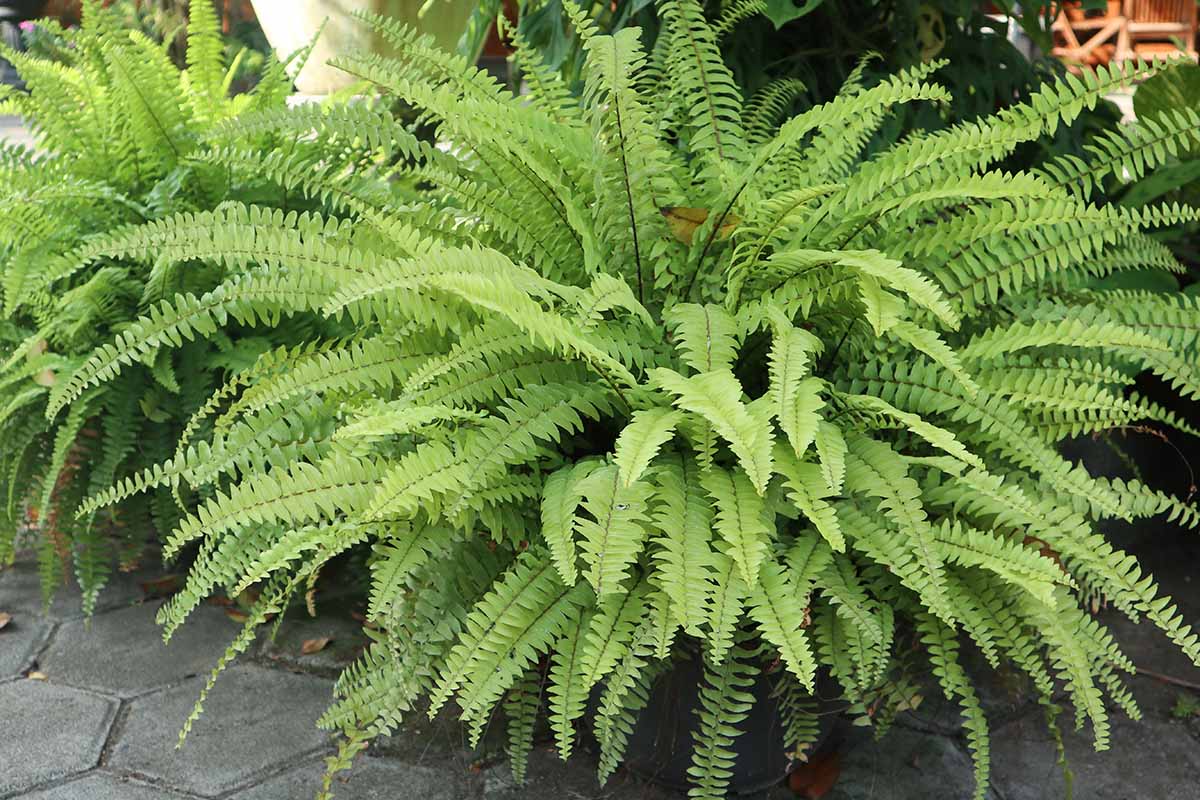
We link to vendors to help you find relevant products. If you buy from one of our links, we may earn a commission.
Cultivating Boston ferns outdoor care differs a bit from houseplant care. Therefore, your cultivation practices should be different, too.
But how? I’m glad you asked.
That’s what this guide is for. It has all the know-how you need for growing Boston ferns outside, whether you’re a complete newbie or a seasoned fern grower.
Here’s what I’ll cover:
What You’ll Learn
Boston Ferns 101
Boston ferns are hardy in USDA Zones 9 to 11. Hailing from the tropics and subtropics of Polynesia, Africa, and the Americas, N. exaltata thrives in the humid, moist, and partially shaded conditions of the swamps and forest floors where it grows naturally.
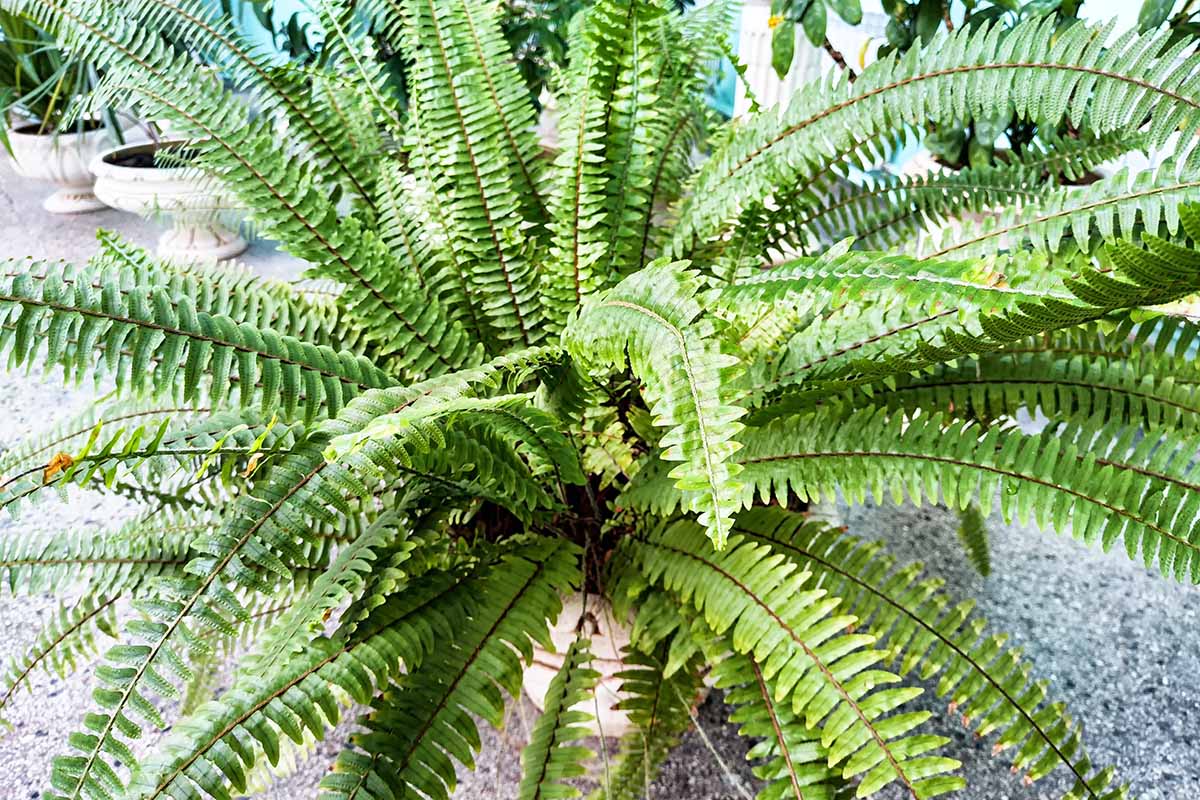
A mature, in-ground Boston fern will typically grow two to three feet in height and spread, although it actually can grow up to seven feet tall in its native habitats!
Its growth habit is upright and spreading, bearing fronds that gradually arch with age.
The fronds are sword-shaped, hence its other common name, sword fern, and beautifully green in color, with alternating leaflets – or pinnae – that each measure two to three inches in length.
As an evergreen plant, N. exaltata won’t drop its leaves or experience much color loss during dormancy, apart from maybe some browning of the fronds.
Variety Selection
There are a number of different N. exaltata cultivars available, though some can be hard to find.
Let’s start with ‘Bostoniensis,’ a cultivar that you can’t ignore when discussing Boston ferns.

Discovered as a visually striking variant among a N. exaltata shipment from Philadelphia to Boston back in 1894, ‘Bostoniensis’ grows quicker, droops more prominently, and has wider fronds than the standard species.
It’s such a popular variant that this is one most often found at garden centers and plant nurseries.
There are other notable varieties, too.
Looking for something smaller than usual? ‘Dallas’ or Dallas Jewel™ is a small, rapidly-spreading variety with a tolerance for lower light and humidity than the species.
‘Fluffy Duffy’ and ‘Fluffy Ruffles’ are both pretty small – the former has feathery and densely-overlapping fronds, while the latter’s are stiff and wavy.
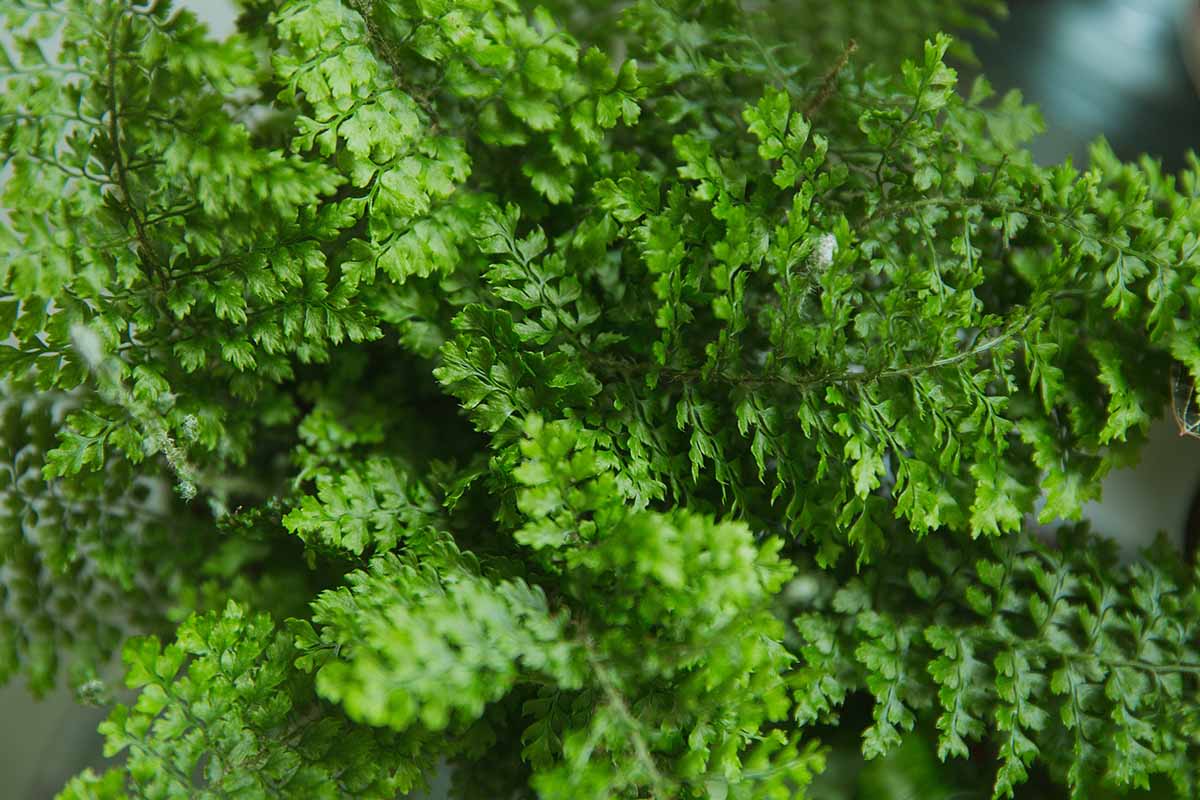
Need a color change? ‘Golden Boston’ sports yellowish green foliage, ‘Massi’ has darker green fronds which droop freely, and Rita’s Gold™ has more chartreuse fronds and a smaller-than-standard frame.
Perhaps something with a unique frondage? Try ‘Roosevelt,’ with its feathery and tufted fronds. Or perhaps ‘Verona,’ a cultivar with exceptionally thin and droopy foliage.
Cultivars are trickier to find than the standard species, though, as they tend to be available in specialty plant shops or via select plant catalogs.
You can find a species plant available in a 10-inch hanging container from Perfect Plants Nursery.
Nature Hills Nursery carries smaller plants in six-inch containers.
Once you’ve picked a specimen or two, it’s time to begin growing them.
Getting Started
While it is possible to propagate ferns via spores, stipe cuttings, or division, the easiest way to get started is to purchase potted plants from the nursery or garden center.
These are generally juvenile plants, often called “starts.”
Ideally, you’ll be working with rich, well-draining, and moisture-retentive soil with a pH of 5 to 5.5.
You may wish to conduct a soil test to check if there are any notable deficiencies and amend the soil accordingly.
Climate- and exposure-wise, these plants prefer partial shade, humidity, and the warm temperatures found in USDA Hardiness Zones 9 to 11.
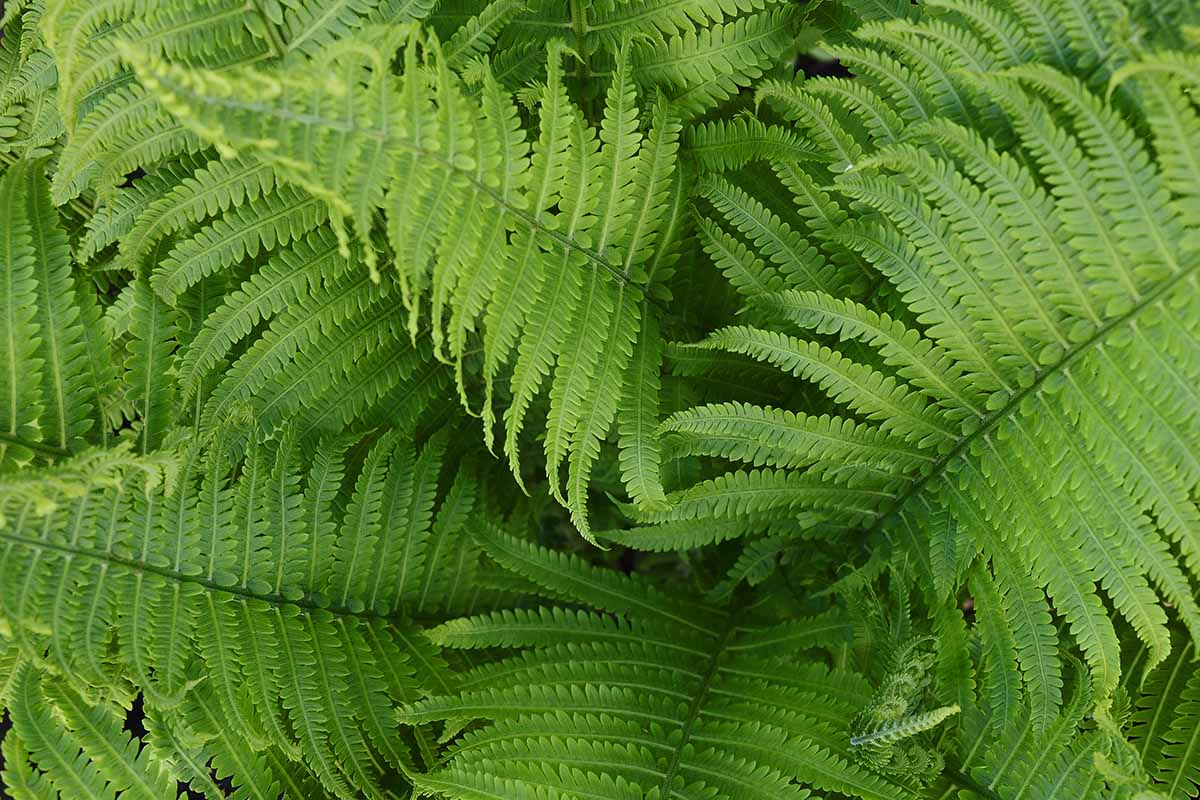
You can also choose to grow your outdoor Boston ferns in containers, whether they’re pots on the ground or hanging baskets.
These will do nicely with a growing medium that comprises equal parts vermiculite and peat moss or coconut coir.
A benefit to growing these plants in pots vs in-ground is that the former can be brought indoors for the winter in climates further north than Zone 9, while the latter cannot, at least not without some digging first.
The best time for planting is in spring or fall. Once you’ve got your spots selected and your plants acquired, simply dig holes that are about the same depth as and a bit wider than the size of the pots they are currently growing in.
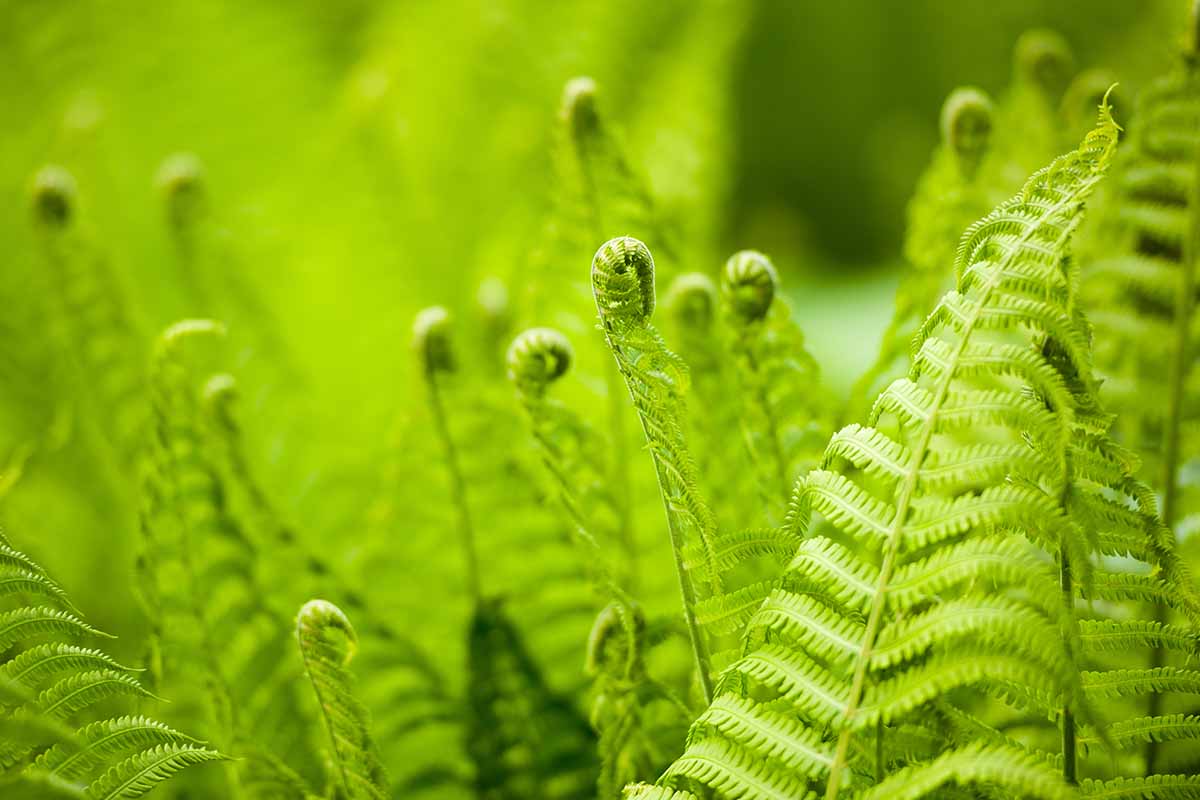
Gently remove the plants from their containers, place them in the holes and slowly backfill with the dug-out soil.
The plants should be the same depth as they were in the growing containers. Give them a deep watering so the soil is moist but not soaking wet.
Growing Requirements
Now that your plants are in the ground, it’s time to keep them happy and healthy for the long haul.
It’s essential to ensure a partially shaded exposure – too much sun will scorch the fronds, while total shade won’t provide enough light to adequately fuel photosynthesis.

During the growing season, Boston ferns prefer to grow in moist soil, so whether your plants are in the ground or in containers, water whenever the surface of the soil feels dry to the touch.
If your area has adequate rainfall, you’ll likely only need to water during dry spells. But keep a close eye on container-grown specimens as they tend to dry out quicker than soil.
During winter dormancy, you should only water when the soil dries out completely, i.e. when you stick a finger in two inches deep and feel no moisture.
In USDA Hardiness Zones 9 to 11, your specimens should be fine to remain outside year-round without ever needing to come indoors.
But in climates colder than Zone 9, you should overwinter your Boston ferns inside once temperatures drop to below 45°F.
When draped gently over specimens plant blankets can be used to provide additional heat during sporadic cold snaps below 45°F.

You can find a two-pack of reusable frost blankets available via Amazon.
While inside, these plants do best with indirect light, 50 percent humidity or more, and temperatures above 60°F until outdoor temperatures are reliably above 45°F in spring, at which point you can move them back outside.
To increase ambient humidity, it helps to place plants on pebble-and-water-filled trays.
You can learn more about how to grow Boston ferns indoors in our guide.
When it’s time to move overwintered plants back outside, do so gradually – 30 to 60 minutes to start, then an additional hour to half hour each following day.
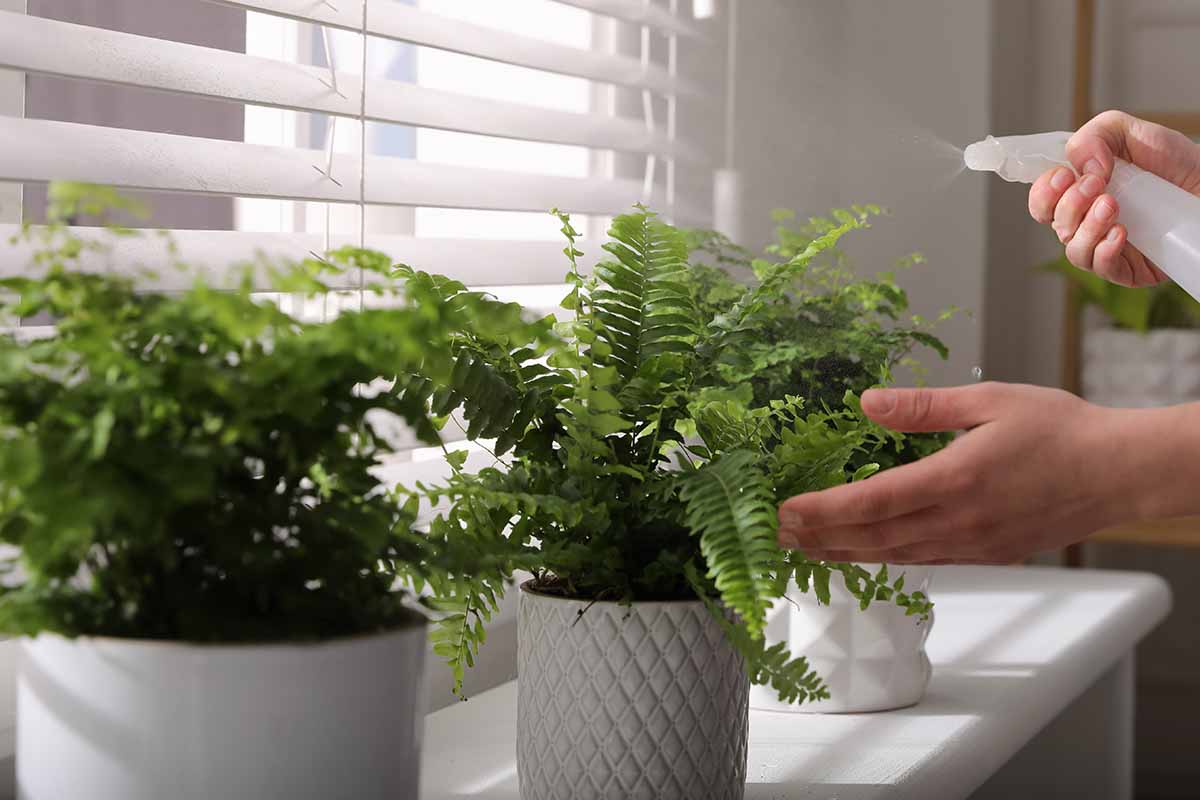
As for fertilizer, in-ground plants shouldn’t require fertilization unless they are showing signs of deficiency such as slow growth or chlorotic fronds.
If you want to be on the safe side, you can apply an all-purpose, balanced fertilizer in spring according to the product instructions.
Container-grown plants can benefit from regular fertilization every couple of weeks during the growing season.
It’s important to make adjustments to your fertilization and supplemental watering as needed, depending on how your plants respond.
Too much fertilizer can turn the ends of the fronds brown and dry, while a loss of color can indicate nutrient deficiency.
Lanky, weak fronds can result from too much shade, while foliar graying can occur when there’s not enough water.

If any fronds start to look old or beat up, feel free to prune them to keep the plant looking sharp, just make sure you use clean pruning tools.
Boston ferns benefit from being divided every couple of years to keep them vigorous and to manage their size. For specimens in containers, you should repot them as needed to prevent them from becoming rootbound.
If you’re looking to grow some colorful flora with your Boston ferns, choose shade-loving beauties such as hostas, coral bells, caladiums, and astilbe as companion plantings.
Pest and Disease Management
Critters such as scale, mealybugs, and spider mites can infest leaves, stems, and even root tissue. In time, infected specimens can become weak and stunted.
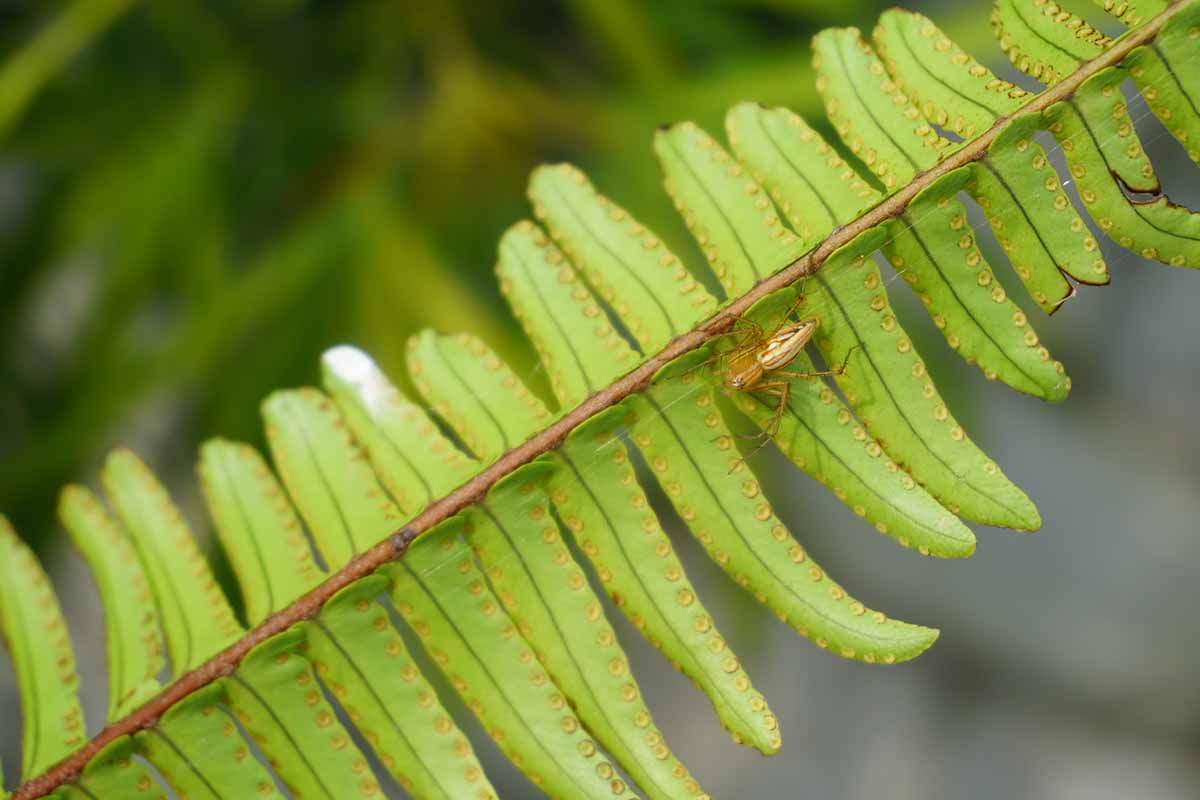
Applications of insecticidal soap can reduce insect populations on the leaves without harming the plants themselves, while soil drenches of pyrethrin insecticides can do the same to pests on and around the roots.
If you notice symptomatic pest infestations above or below the soil line – feel free to do a bit of exploratory digging for the latter – then it may be time to bust out some controls.
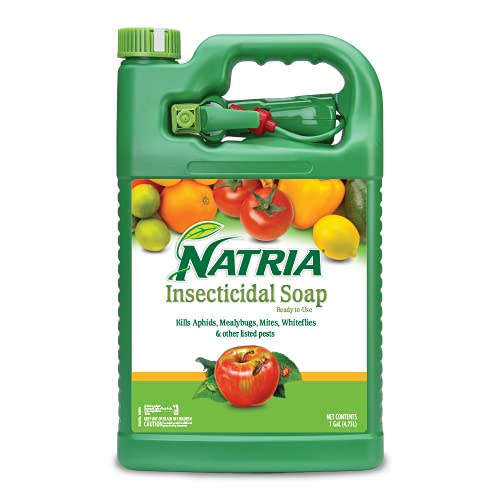
Natria offers ready-to-use insecticidal soap in gallon-size containers available at Amazon.

And you can also acquire some pyrethrin concentrate from PyGanic Gardening via Amazon.
Diseases such as Pythium root rot, caused by oomycetes and Rhizoctonia aerial blight, a fungal infection can also cause weak and stunted growth along with wilting, frond graying, and necrosis.

Be sure to plant in well-draining soil and avoid overwatering at all costs, which will oversaturate the soil and create the perfect breeding ground for pathogens.
If your plants do become infected, you can remove symptomatic tissue to slow disease progression, or remove them entirely if they’re too far gone to save.
Your Ferny Journey Begins Now
Now that you’ve got the know-how needed to grow these bad boys outside, you can start to fill your landscape with as many Boston ferns as you desire.
Whether they’re sitting on the porch solo or alongside colorful companions in the garden, well-grown Boston ferns will really burst with the fantastic frondage that they’re famous for.
Still have questions? Have a tip or two of your own to share? Check out the comments section below!
If you enjoyed reading about Boston ferns and would like to learn more about growing some other species in your garden, check out these guides next:

